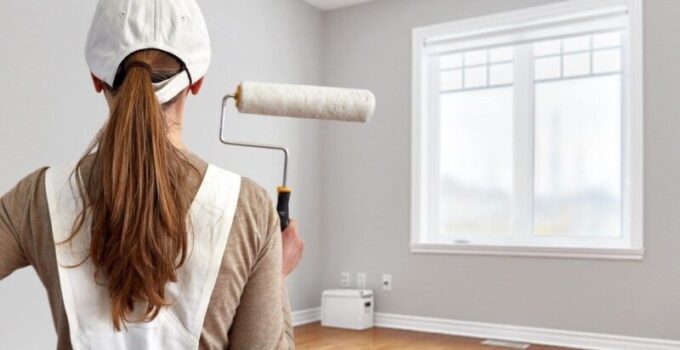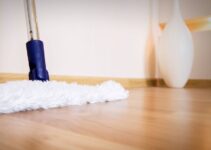Homes are decently hard to keep in top shape. Especially with constant weather effects messing with our beautiful paint jobs the whole year-round. That’s why painting can be such a chore to do, it feels like no matter the quality of our job the color will just get muddy and dirtied by constant dirt that comes with winds or rain. Even with interior painting, the problems of water damage or consistent moisture in the air can damage the wall’s appearance rather quickly. However, while we can’t stop weather phenomena from happening we can most definitely enhance the quality and durability of our paint job. Among the ways this can be done we include the time of year during which the painting takes place. You’d be surprised how impactful this can be for the overall painting experience, which is why we are covering it today.
Page Contents
What you need for a successful painting experience
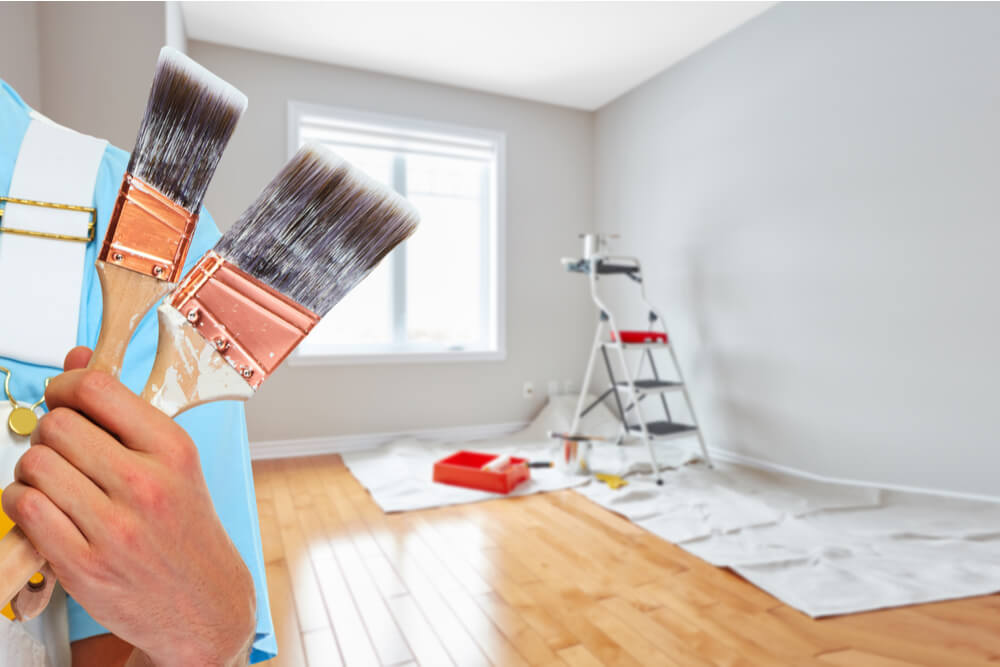
Source: colortrendsco.com
Let’s first see a few things you need to have before doing it. Get a lot of drop cloths to cover items so they don’t get paint on them. You should get something to protect surfaces too. The window and doors should be additionally secured with masking paper which will be easier to mount on these surfaces. Tape is a given, as you need something to hold the paper as well as to cover trims and other small spaces.
Do the ceilings first when painting, after that, take care of the walls. The smaller bits and trims should be done last. That way you’ll be able to lower the number of potential mistakes you make.
The rest of the job is all about patience and consistency. Don’t hurry it just to get it done. Painting is all about doing equal strokes and making sure there’s enough paint being spread at any moment. Let the paint dry properly before cleaning or getting near it too. Without ample time to stick to your walls paint can get easily removed on accident.
Otherwise, you can contact somebody to do the job for you. With AbsoluteHomeServices you can cut down the whole job and preparation by simply employing great, reliable professionals to do them. Whether it’s interior or exterior painting, they’ll have you covered. Check their services, they may be just the thing you need.
When to do it?
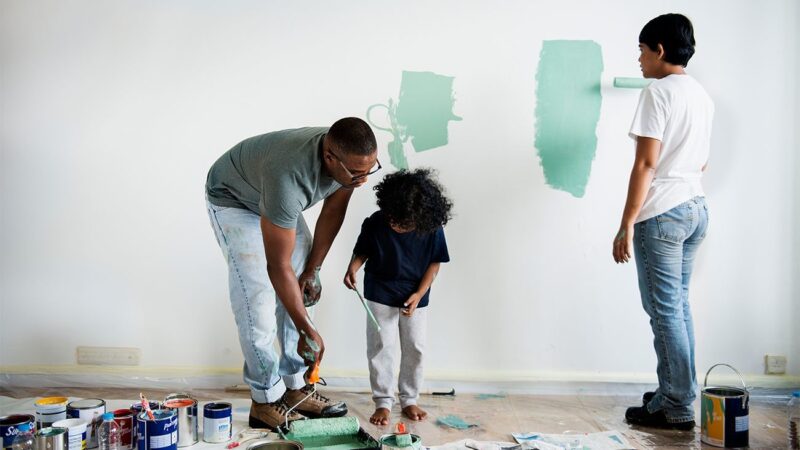
Source: americanfinancing.net
The biggest issue we face when the painting is moisture. Whether we are doing interior or exterior walls, moisture can poise a considerable amount of issues. These issues start off small with the drops forming on the walls, causing some of the new paint to drip off. By doing so it requires us to fix the slight holes in the paint job which may not take too long but still risks ruining the whole process. By painting over them you may face another issue which is poorly applied color. As you can assume, having a wet surface when applying wet paint means that your paint could “slip” over the moisture that’s already on there. This could make a piece of wall feel impossible to paint even after a few tries. That problem can grow bigger depending on the type of material your wall is made out of. If it’s something that already proves troublesome to paint, adding this layer of difficulty can turn the whole job frustrating.
Additionally, high moisture can cause various interior and exterior issues that can hurt your walls as a whole. The best example would be simple water damage. Water damage usually occurs because water manages to seep between the layers of walls or from the exterior into the interior. There, the water accumulates and sits, slowly damaging the area around it. It’s reasonable to assume that most people have seen water damage at least once during their life. The big splotches of the wet wall are unappealing in on themselves. Now imagine if you tried directly painting over them. The mix of water damage and discoloring of new paint can result in really ugly sights. While some types of paint can hide water damage, the issue will persist so it’s better you solve it before proceeding with a paint job.
With all these effects moisture can have on our home, it’s safe to say the best time of the year to engage in painting, especially interior painting, is during months with less humidity. Those months are almost universally winter months, during which the paint can dry much faster.
What do the winter months bring?
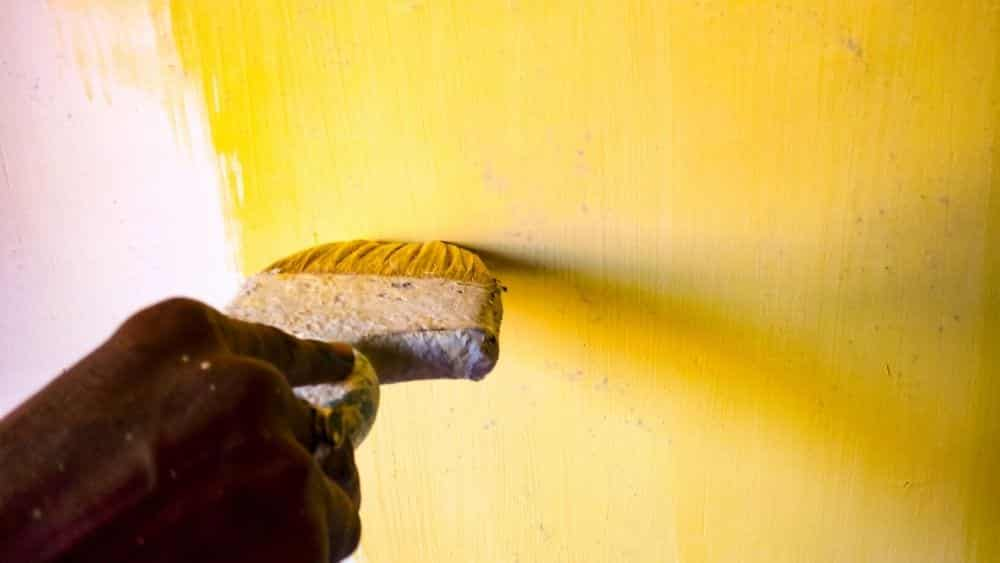
Source: newhomesource.com
Well, as we’ve said already, these months are far less humid. While the initial assumption of it being too cold for a paint job may be true for us, because we get cold in winter after all, for houses it’s one of the best times to get it done. A fresh coat of paint during these months is bound to do a lot better due to the lack of harmful humidity. Despite there being more potential for sunless days, the paint will still dry better as humidity has a far greater impact on the whole experience.
There are situations where you shouldn’t stick to this advice though. If winters in your area are characterized by frequent rain or even snow the overall moisture in the air will be a lot greater. The problem here is not only one of passive humidity in the air but potential, direct water damage as well. We’ve already covered some effects that can have on your paint job so it’s safe to say such situations should be avoided. In case you need to tackle a paint job but live in these places, we suggest aiming for months that are cold and dry. These could be completely different for your area so it pays to know your climate.
Not only does proper preparation in this area make paint jobs far more successful, but you also lower the risk of water damage when committing to them during these months. After all, apart from being aesthetically displeasing, water damage can have a heavy impact on the home’s structural quality. The structure could be compromised by water constantly wearing it off or even giving up under the weight of water accumulated on top of it. If your home has these issues even outside of extremely rainy time periods, we suggest having an inspection come and check your home for potential leaks or roof damage.
Conclusion
To achieve the best results, we should do both interior and exterior painting at the optimal time of the year. These are colder months, usually winter ones. Not only does painting during these months enhance the quality of our job, it can also prevent a ton of different issues. Don’t forget to double-check the area you are in for potential rain seasons that could ruin your plans and do preparations before actually diving deep into it to reduce the cleaning process.

